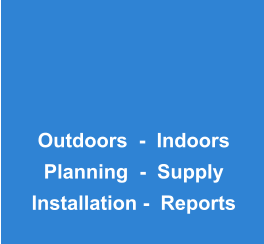





© Linetop Ltd 2021









COUNTER PRODUCTS
Most Linetop visitor counters comprise one or more sensors connected to a data logger which stores hourly totals in flash memory. There is a ‘simple logger’ too that just shows a running grand total on a meter display, avoiding the need to use a PC. Another logger version records timestamps when exact event times are needed or to reveal the clustering pattern of events. Each counter needs a waterproof container of some sort. This can be a secure metal box, a lockable metal pillar, or a plastic Pelicase. This is chosen to suit the location where it is deployed, with regard to any need for covertness and physical security. Sensors outdoors can detect pedestrians, cyclists, cars, and occasionally equestrians. Up to 16 sensors inside buildings can be connected via a wireless link directly to a single PC which stores the results instantly, eliminating the use and downloading of data loggers. Live data held on a networked drive becomes available to colleagues across the entire network almost immediately. Analytical software running on a PC easily reveals the visitor patterns and trends from the large mass of recorded raw data. Results are shown as charts and tables that can be pasted into reports and presentations to promote your project objectives. The Linetop PC software is supplied under a single site licence, and sometimes as a whole organisation licence, so you can install it on your colleagues’ PCs as often as you wish. Updates are supplied free to existing customers and there are no ongoing fees. Linetop’s clients usually have the expectation that their purchases will last 5-10 years without being forced into an upgrade or a buy-again cycle - unlike the situation with competitors. So buying your counters from Linetop is a solid long-term investment where the costs are capital costs paid at the start and the future years costing nothing but for someone’s time to look after it. Logger batteries are the ‘AA’ kind found in retail shops, costing next to nothing, and are replaced typically once or twice a year.



Data loggers
All our loggers are ‘plug-and-play’ and connect to any of our sensors at any kind of location. They are set up by users in a way that reflects the way visitors are moving. For example, walkers on a open path will move faster than people using a stile. The logger factors location variability so just one count is stored per visitor. Collecting data is done by swapping over the coloured ‘memory cube’ for a spare one and then re-starting the logger. The used cube is read later on with an office PC. This way of working is more reliable and easier than carrying around a laptop PC or using handheld devices that obsolete rapidly.Control Box
All loggers are set up using a plug-in Control Box. The process is simple, like setting a digital wristwatch with the date and time using push buttons. As the control box is a fieldworker tool, you only need one of them regardless of how many loggers you manage. The Control Box does not harvest data from loggers - you swap over the flash memory cubes to do that and read used ones later at the office with a PC. The Control Box does not have any batteries. It obtains its power from the three ‘AA’ batteries in the logger while it is connected. These are the normal kind of batteries available in shops.Wireless data links
In visitor centres, and staffed buildings generally, it is also possible to send live visitor data by radio into a local PC that is running all day long. The use of a data logger is then avoided, and visitor data saved to a networked hard drive is available to local or remote colleagues almost immediately. The live data is captured by Linetop’s analytical app (EcoPC) which also analyses visitor data that has been collected by data loggers. EcoPC is simple enough for anyone familiar with a word-processor yet has powerful features to reveal patterns or trends from a mass of raw data, presenting the results as tables and charts.



Windows PC apps
Linetop provides two PC apps running on Windows XP, Vista, 7, 8 and 10. Numero is our downloading program to read used memory cubes. It is here that new data is linked to a site name; it can be halved to factor visitors/cars being counted both in and out of a facility; it saves raw data as files; and exports it into an EcoPC database. EcoPC is our analytical tool joining up all data from all counters for all periods of time. Data from any counter can be compared with any others for annual, quarterly, monthly, weekly, daily, hourly, hour-of-day and day-of-week profiles. Its tables and charts are easily pasted into office documents.Inductive loops
Loops are the industry-standard method to detect cars on highways, frequently put in front of traffic lights on roads up to 6m wide. They can also be used to detect bicycles on tracks with a hard surface like tarmac up to 2.5m width. A petrol disc cutter is generally used to install a loop and Linetop does this as a paid-for service. Linetop also sells Preformed Loops made of multicore wire which can be laid on top of the base layer of a new road (i.e. under its final tarmac) so nothing can be seen and no disc- cutting of slots is needed. Loops work in hardcore but a magnetometer is a better choice for most rubble roads: we will advise you after seeing photos.Magnetometers
A magnetometer is a kind of digital compass which perceives a shift in the direction of North as a car goes past. This then triggers a count on the data logger attached. Magnetometers can also be used to count bicycles on narrow cycle tracks or when placed in front of narrow anti-motorbike barriers. The road or track surface is often unsealed. The small sensor element must be immobile within the road surfacing material. These sensors are easily installed in unsealed roads with only hand tools like pick-axes. They can be installed quickly in tarmac roads too by drilling a 25mm hole and then disc-cutting a slot to the road verge for the sensor feeder cable.

Pressure slab sensors
These are an excellent covert buried sensor suitable for walkers on paths with a natural firm surface. More than one slab can be joined up to span wider paths and they come in a variety of sizes/areas. Completely invisible to visitors, they run for over a year from the AA batteries inside the logger box. Buried slab sensors are the method of choice for forestry-style mountain bike trails. Slabs can also be used to detect the bicycles on mixed-user trails when set up to recognize the unique bump-bump acoustic signature as the two wheels pass over the buried pads. They are made in 60x35cm and 100x25cm or custom surface sizes.
Break-beam sensors
As sharp as a laser but eye-safe, these sensors are fitted indoors to a doorway or a corridor. Typical places are visitor centres, shops, galleries, cafes where the door movement does not itself block the infra-red beam. There is a transmitter box one side of the gap and a receiver box incorpor- ating a logger on the other side. Both boxes need 3 ‘AA’ batteries per year. It is easy to fit these covertly into new buildings under construction, in which case they can be hardwired to a front- desk PC to store the data. Another live-feed option is a battery-operated radio data link to some nearby PC.
Body heat (pyro) sensors
Pyros are our most versatile sensor to use above ground level, targetting the visitor’s hands or waistline. It is a small grey tube easily concealed in wooden fences, waymarker posts and walls. A Pelicase can be buried in the path verge, as in the photo above. Not recommended for bicycles as cyclists may be moving too fast to register. Pyros in metal equipment pillars suit formal civic parks. Metal boxes with pyros can be fixed to town street furniture for counting shoppers. Pyros can also be used at narrow doorways (e.g. public toilets) looking down from the door lintel on to the heads of the visitors passing underneath.



VISITOR COUNTERS







